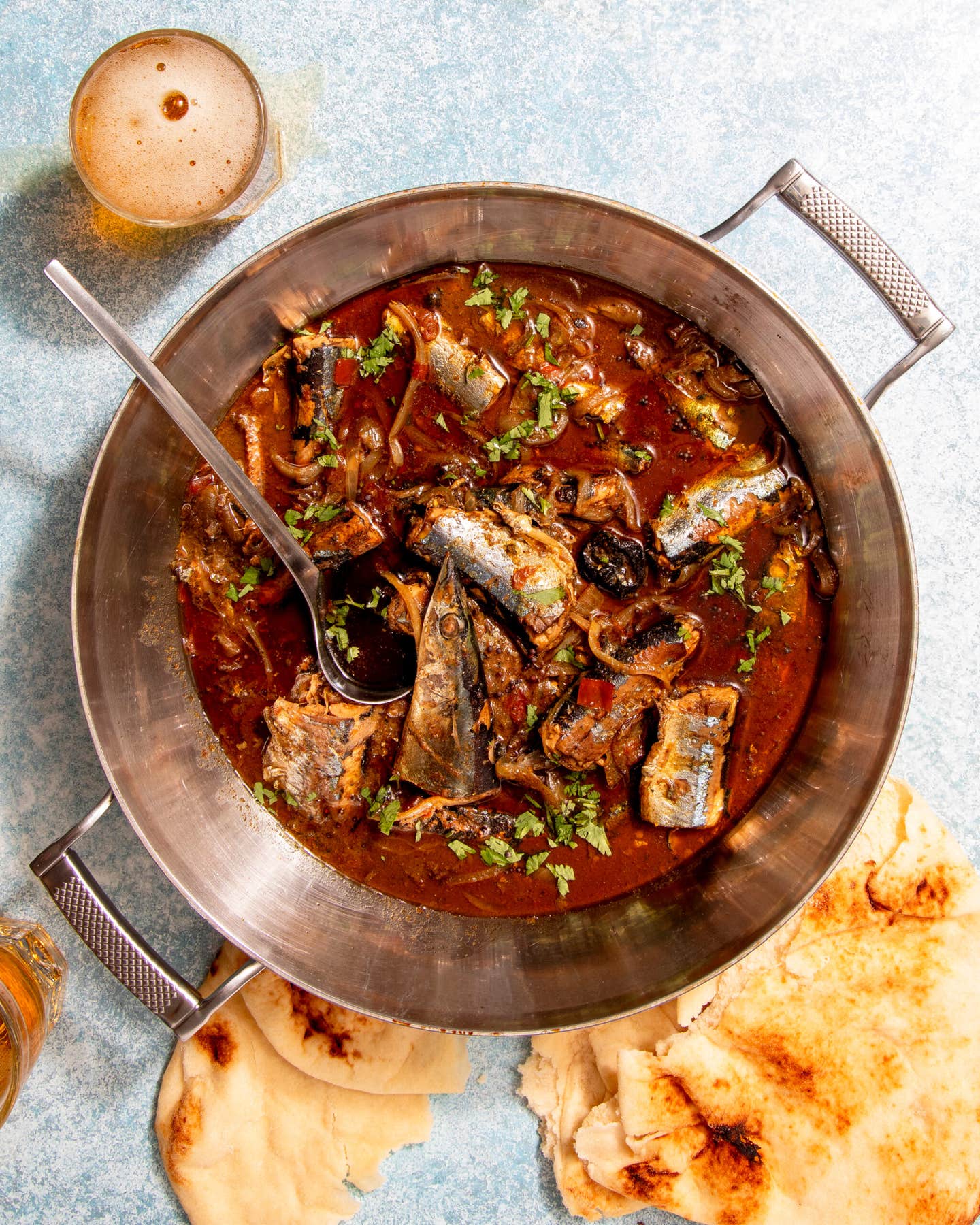Keralan Fish Curry
Kudampuli, a tropical fruit used in Indian and Sri Lankan cooking, gives this coconut milk-based stew its signature tang.
- Serves
2–4
- Time
30 minutes

Whenever knifemaker Joyce Kutty brings home fresh mackerel from a fishing trip on the Rhode Island coast, her mother Kamala makes this curry she learned to prepare for her husband, who is originally from Kerala, India. Kutty explains that Malayalis love the sour dried rind of kudampuli, also known as brindle berry or Malabar tamarind, in their fish curries: “It’s one of the special ingredients that really makes it Kerala style.” When she talked to her father about the ingredient, Kutty learned her grandfather was a spice merchant who sold kudampuli.
A tangy tropical fruit used almost exclusively in Sri Lanka and Kerala, kudampuli brings balance and depth to the region’s coconut-rich curries. Once harvested, the ripe pods are seeded and sundried until they turn from green or pale yellow to brown and leathery. Kutty recommends adding kudampuli to dishes with fatty fish: think kingfish, Spanish mackerel, or Rhode Island bonito (the Kutty family favorite). Look for kudampuli and fish curry masala paste online or at your local South Asian grocery store.
Featured in “Meet the Knifemaker Inspired by South Asian and New England Fishing Traditions” by Shane Mitchell.
Order the SAVEUR Selects Tri-Ply Stainless Steel Chef’s Pan here.
Ingredients
- 3 Tbsp. fish curry masala paste
- 3 Tbsp. vegetable oil
- ½ tsp. fennel seeds
- ½ tsp. fenugreek seeds
- ½ tsp. black mustard seeds
- 5–6 fresh curry leaves
- 2–3 green chiles, such as serrano or jalapeño, finely chopped
- 4 shallots, thinly sliced
- 2 Tbsp. ginger-garlic paste
- 1 medium tomato, finely chopped
- Kosher salt
- One 13.5-oz. can coconut milk
- 3–4 pieces kudampuli (Garcinia cambogia), soaked in ¼ cup water
- 1 lb. meaty fish fillets, such as mackerel, bluefish, or cod, cut into 3-in. pieces
- Finely chopped cilantro, for garnish
- Basmati rice or naan, for serving
Instructions
Step 1
Step 2
Step 3
Step 4
- In a small bowl, stir together the fish curry masala and 2 tablespoons of water.
- To a large skillet over medium-high heat, add the oil. When it is hot but not smoking, add the fennel, fenugreek, black mustard seeds, and curry leaves and cook, stirring occasionally, until the leaves start to sputter, about 1 minute. Add the chiles and shallots and cook, stirring occasionally, until the shallots are soft and translucent, about 5 minutes. Add the ginger-garlic paste and tomato and cook, stirring occasionally, until the tomato is soft, 2–3 minutes. Add the fish curry masala paste, season to taste with salt, and continue cooking, stirring continuously, until fragrant, about 3 minutes more.
- Add the coconut milk and kudampuli (along with its soaking liquid), turn the heat to high, and boil until slightly thickened, about 5 minutes. Add the fish, cook for 3 minutes, then cover, turn the heat to low, and simmer until the fish is cooked through, about 5 minutes more.
- Transfer to serving bowls, garnish with cilantro, and serve warm with rice or naan.
Keep Reading
Continue to Next Story










